
As mountain bikers, we demand a lot out of our shoes. Not only do they have to be comfortable, they also have to be durable, protective and efficient, both on and off the pedals. Oh, and we also don’t want to pay very much for them. No wonder it’s hard to find a great pair of mountain bike shoes!
The Singletracks staff and contributors have tested more than 100 pairs of mountain bike shoes over the years. Here you’ll find a list of the best shoes we recommend for various types of mountain biking from XC and gravel to all-mountain and enduro. If you’re interested in how we came up with our list, scroll down to learn about all the criteria we consider whenever we evaluate a pair of shoes and what you should look for in a mountain bike shoe.
The best mountain bike shoes our editors recommend
- Best cross country/gravel mountain bike shoe: Shimano XC7
- Best flat pedal mountain bike shoe: Five Ten Freerider Pro
- Best trail/enduro mountain bike shoes: Specialized 2FO
- Best winter mountain bike shoe: Fi’zi:k Terra Artica GTX
- Most comfortable mountain bike shoe: Five Ten Freerider
- Style points: Ride Concepts Tallac and Flume
We’ve grouped our recommendations by ride type, and within each section shoes are listed in alphabetical order.
Submit your response to see Singletracks readers’ current favorite shoes.
Reader response
- 2024 best mountain bike shoe: Bontrager Rally
Best Mountain Bike Shoes for Cross Country and Gravel

1. Five Ten Kestrel BOA
- Price: $230
- Buy from Adidas / Five Ten.
The Five Ten Kestrel BOA was recently redesigned to make it less of a trail shoe and more of a dedicated gravel/cross-country/downcountry shoe, and we’re here for it. The heel and toe feature a tall tread for punching down to solid ground while the instep has a bit of that sticky Stealth rubber for finding the pedal and clipping in. The BOA up top ensures a tight and secure fit and a fairly stiff sole delivers power efficiently.
What we like: Versatile use for gravel, cross-country, and downcountry riding
What we don’t like: Five Ten’s most expensive pair of mountain bike shoes
Read more: Five Ten Kestrel BOA Review

2. Fi’zi:k Artica Terra GTX
Best winter mountain bike shoe
- Price: $260
- Buy from Amazon.
Depending on where you live, a good pair of winter mountain bike shoes can be a great investment. Our pick: Fi’zi:k Artica Terra GTX. A Gore-Tex membrane ensures the shoe is completely waterproof, and the integrated ankle cuff helps prevent snow from getting in from the top. There’s a fleece lining inside and a reliable BOA dial to keep the Artica Terra GTX shoes glued to your feet.
What we like: Fleece lined warmth is like wrapping your feet in a blanket
What we don’t like: Nothing to note
Read more: Fi’zi:k Artica Terra GTX Winter Bike Shoe Review

3. Shimano XC7
Best cross country/gravel mountain bike shoe
- Price: $225
- Buy from REI
The Shimano XC7 is a gravel/XC shoe that’s way more comfortable than it looks. The premium upper material stretches and molds to your foot and the two — count them, two! — BOA dials keep everything buttoned down. With a very stiff sole, the XC7s are a great choice for gravel and XC racing in particular. Bonus: it’s also available in wide width.
What we like: Secure fit thanks to double BOA dials
What we don’t like: Rubbery upper can be squeaky and noisy
Read more: Shimano XC7 shoe review
Best Mountain Bike Shoes for Trail and Enduro

4. Bontrager Rally
- Price: $155
- Buy from Trek
The Bontrager Rally is a rugged clipless pedal shoe designed for trail and enduro riding. The simple lace system, paired with a fat hook-and-loop strap makes for a secure fit while keeping the cost down. With multiple colors to choose from and unisex, half sizes available between 38 and 46EU the Bontrager Rally delivers both style and comfort.
What we like: Comfortable and casual
What we don’t like: Not the most ventilated shoe, but could make a good year-round shoe for some.
Read more: Bontrager Rally Mountain Bike Shoe Review

5. Five Ten Freerider
- Price: $110
- Buy from Adidas/Five Ten
This is the shoe that put Five Ten on the mountain bike map thanks to its sticky, grippy Stealth rubber outsole and comfortable, casual style. Flat pedal riders love the Five Ten Freeriders for pedal grip on the bike and flexible hikeability off the bike. Men’s and women’s styles (and youth, too) are available in an ever-changing array of color options.
What we like: Stealth rubber is reliably grippy and comfortable for all-day wear
What we don’t like: There are stiffer options out there for more aggressive riding
Read more: Five Ten Freerider vs. Freerider Pro MTB Shoe Review

6. Five Ten Freerider Pro
Best flat pedal mountain bike shoe
- Price: $150 – $160
- Buy from Adidas/Five Ten
The Five Ten Freerider Pro is a natural upgrade from the Five Ten Freerider or a clipless pedal shoe convert. These shoes offer slightly more performance features such as impact-protection on the toe box and water resistant options for $40-$50 more than the base Freerider. These additional features make the Five Ten Freerider Pro a good choice for trail and enduro riders.
What we like: Shoe stiffness is well balanced with comfort
What we don’t like: Sizing can be inconsistent across the Five Ten line
Read more: Five Ten Freerider vs. Freerider Pro MTB Shoe Review

7. Fox Union
- Price: $149.95 (flats) to $249.95 (clipless + BOA)
- Buy from Amazon
Fox Racing’s mountain bike shoe debut, the Union and Union BOA, has a lot going for it. The one-piece “unified” synthetic upper is waterproof, provides protection and is easy to clean. Fox includes interchangeable arch support inserts for a more personalized fit. The Fox Union shoe is available as a laced flat or lace plus velcro clipless mountain bike shoe. The most expensive model is clipless with a BOA lace system.
What we like: Smooth, clean and modern design
What we don’t like: Very similar to the Specialized 2FO Cliplite
Read more: Fox Union BOA Clipless Shoe Review

8. Giro Chamber II
- Price: $150
- Buy from Backcountry
The Giro Chamber II is the brand’s enduro and downhill clipless shoe, designed for the rigors of World Cup racing. Straight off the bat, it should be a few different things; stiff, tough, and well-made. When racing, you want to be able to put power down when needed without losing watts, and have a secure and confidence-inspiring connection to the bike.
What we like: Stiff sole, snug fit, quality materials and construction
What we don’t like: Not great in the cold, ankle protection could be better
Read more: Giro Chamber II mountain bike shoe review

9. Ride Concepts Tallac and Flume
Most stylish mountain bike shoes
- Price: $160 – $210
- Buy from JensonUSA and Competitive Cyclist.
Buyers can choose from flat or clipless versions of the Ride Concepts Tallac (men’s) and Flume (women’s) trail/gravity shoes. These distinctive shoes deliver durability and stitch-free comfort with plenty of padding to protect feet from rocks and roots.
What we like: Secure fit even without BOA, and A+ for aesthetics
What we don’t like: A little heavy
Read more: Ride Concepts Tallac Shoe Review
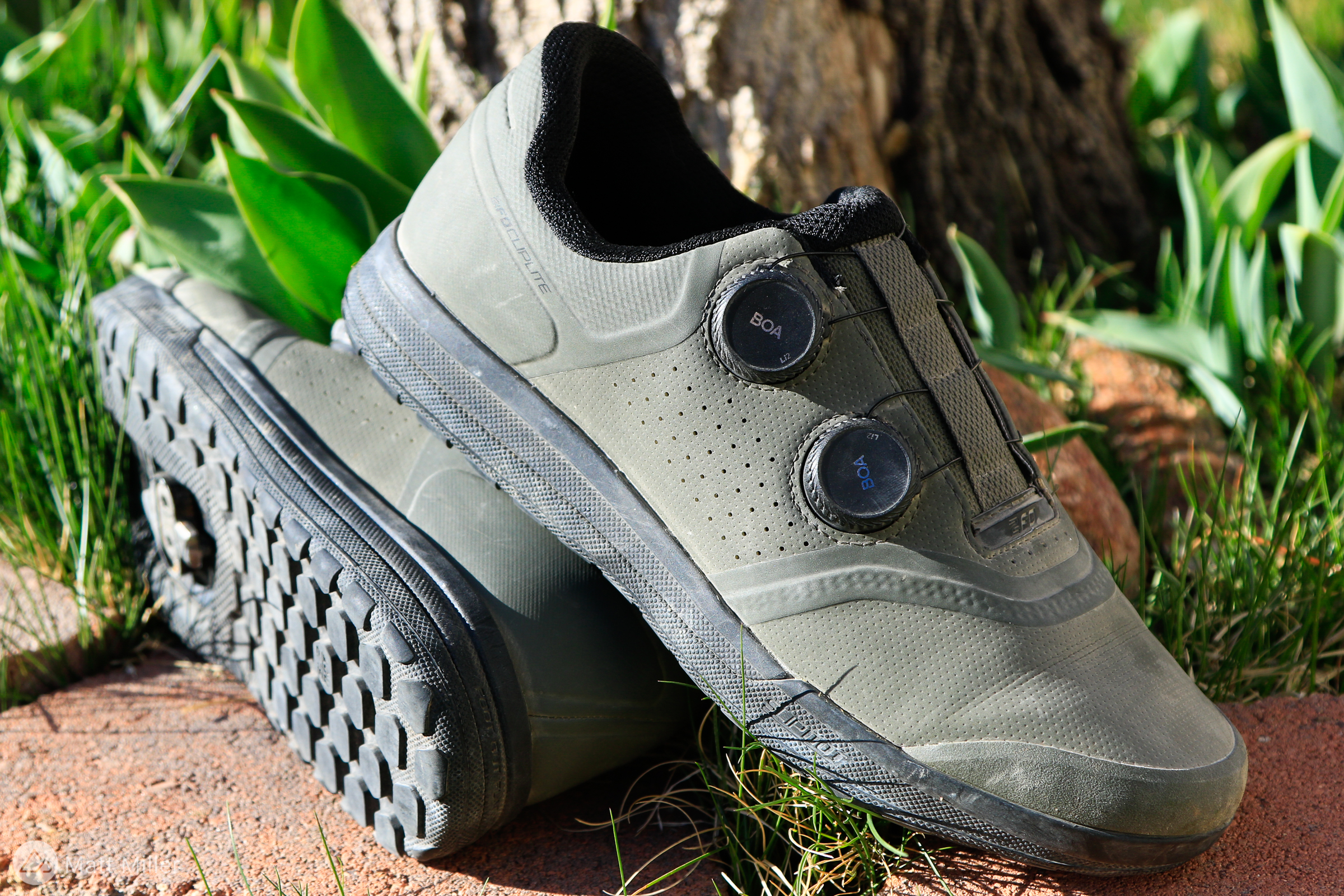
10. Specialized 2FO
Best trail and enduro mountain bike shoes
- Price: $100-$200.
- Buy from Specialized.
Flat pedal or clipless, BOA or lace, the Specialized 2FO is a versatile shoe lineup that’s great for almost any type of riding. The latest generation of the Cliplite clipless 2FO shoe pairs the signature Slipnot sole with clipless cleats and two BOA dials that’s perfect for trail riding. For flat pedal riding, choose from various models that range from casual (the 2FO Method) to full-on DH.
What we like: Flexible toe and heel while maintaining stiffness mid-foot
What we don’t like: Too narrow for some feet
Read more: Specialized 2FO Cliplite shoe review, Specialized 2FO Roost Clipless shoe review

11. Ride Concepts Accomplice BOA
- Price: $150
- Buy from Jenson USA
The Ride Concepts Accomplice BOAs are a great flat pedal MTB shoe for all-around trail riding. With great grip on and off the bike and a BOA ratcheting lace system for a tight fit, these shoes deliver reliable performance and comfort on the trail. The Accomplice is available in flat or clipless versions, and both men’s and women’s styles. Read our detailed review of the Ride Concepts Accomplice mountain bike shoe.
What we like: Good grip and comfortable on and off the bike
What we don’t like: Only one color choice available for women (men get three choices)

12. Northwave Tailwhip
- Price: $120.99
- Buy from Northwave retailers
The Northwave Tailwhip is a great flat pedal mountain bike shoe that works well and looks good too. We tested the Eco Evo version that boasts a similar design and function as the original with excellent pedal grip and medium-weight uppers that are comfortable and durable enough for trail riding.
What we like: The casual look and medium weight make this a good all-around flat pedal shoe.
What we don’t like: Off-the-bike grip isn’t great, especially in wet conditions.
Best Mountain Bike Shoes for Enduro and Gravity

13. Endura MT500 Burner
- Price: $150 – $160
- Available at Backcountry and other online retailers
The Endura MT500 Burner is one tough shoe and suitable as a flat-pedal gravity racing shoe. The stiff sole is ready for harder and higher impacts than the average flat pedal shoe. And protection goes throughout this shoe with a padded inner ankle cuff and reinforced toe and heel. Also available in a clipless model.
What we like: Overall protection and surprisingly good walking traction
What we don’t like: Runs a little big
Read more: Grip-O-Rama: 7 Flat Pedal Mountain Bike Shoes Reviewed
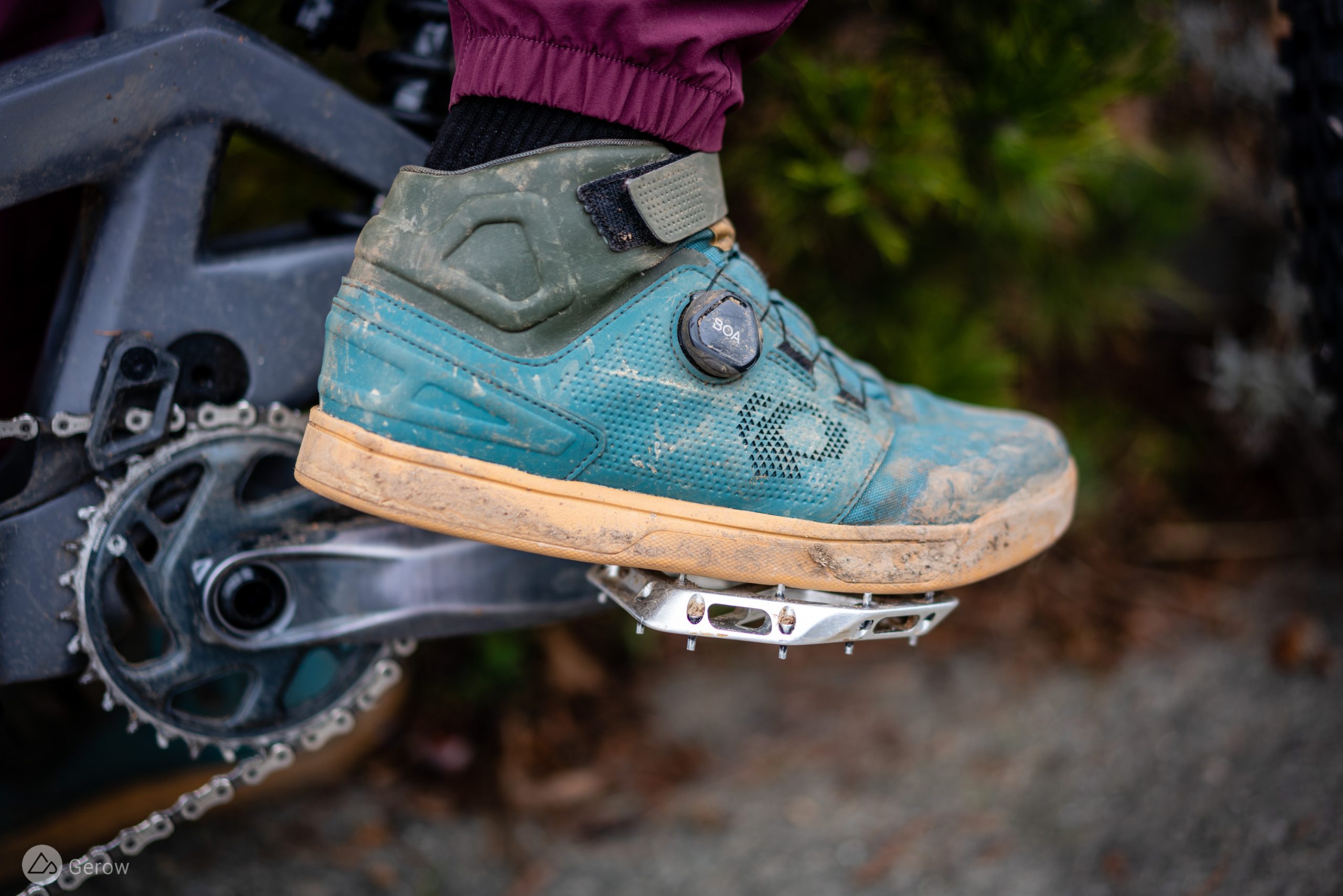
14. Pearl Izumi X-Alp Launch
- Price: $175
- Buy from Pearl Izumi and Backcountry.
The Pearl Izumi X-Alp Launch flat pedal shoe offers high-top ankle protection with a premium BOA lace system making it one of the highest performing flat pedal shoes you can buy. The soles offer just the right amount of pedal grip to keep them in place without making it tough to reposition your feet when necessary.
What we like: Extra ankle protection and dial-able fit
What we don’t like: Could use more grip on hike-a-bike
Read more: Pearl Izumi X-Alp Launch Mid WRX shoe review

15. Shimano GE9
- Price: $225
- Buy from REI.
A relative newcomer to the mountain bike shoe market, the Shimano GE9 gravity shoes are off to a great start. The integrated ankle cuff keeps out the duff while the ratcheting lace system makes for a dialed fit. With a medium stiff sole the GE9s are very hikeable and are grippy too.
What we like: This shoe offers a lot of protection, plus sheds water and mud well
What we don’t like: Heavy for everyday trail riding
Read more: Shimano GE9 clipless gravity shoe review
Mountain Bike Shoes Compared
| SHOE | PRICE | NOTES | STYLE | TYPE |
|---|---|---|---|---|
| Bontrager Rally | $155 | Unisex | Clipless | Trail/enduro |
| Endura MT500 Burner | $150 – $160 | Unisex | Clipless or flat | Trail/gravity |
| Five Ten Freerider | $110 | Men’s and women’s styles | Flat | XC/Trail |
| Five Ten Freerider Pro | $160 | Men’s and women’s styles | Flat | Trail/enduro |
| Five Ten Kestrel BOA | $230 | Men’s and women’s styles | Clipless | XC/gravel |
| Fi’zi:k Terra Artica GTX | $260 | Unisex | Clipless | XC/trail |
| Fox Union | $150 – $250 | Unisex | Clipless or flat | Trail/gravity |
| Giro Chamber II | $150 | Men’s only (Giro Ventana for women) | Clipless | Trail |
| Northwave Tailwhip | $120.99 | Unisex | Flat | Trail |
| Pearl Izumi X-Alp Launch | $150 | Unisex | Flat | Trail/gravity |
| Ride Concepts Accomplice | $150 | Men’s and women’s styles | Flat | Trail/gravity |
| Ride Concepts Tallac and Flume | $160 – $210 | Men’s and women’s styles | Clipless or flat | Trail/gravity |
| Shimano GE9 | $225 | Men’s only | Clipless | Trail/gravity |
| Shimano XC7 | $230 | Men’s only | Clipless | XC/gravel |
| Specialized 2FO | $100 – $200 | Unisex | Clipless or flat | Trail/gravity |
Which mountain bike shoes do you recommend? Tell us in the comments below.
Are flat or clipless shoes better for mountain biking?
There are pros and cons to riding with clipless or flat pedal shoes, and the choice ultimately comes down to rider preference. Be sure to read up on the advantages of flat pedal shoes and how to go clipless if you’re unsure.
Flat pedal mountain bike shoes
Generally, a flat pedal mountain bike shoe will have a flat sole to maximize the contact area with the pedal. Also, the rubber itself tends to be stickier than what you’d find on a tennis shoe. Stiffness varies from brand to brand, but a flat pedal shoe will be slightly stiffer than your Nikes. Padding and support is also something to consider. Depending on the kind of riding you want to do, some of the DH-specific shoes can be overkill (read: too heavy) outside of a bike park. Unfortunately, many companies–flats or clipless–skimp on the insoles, but that’s easily remedied with aftermarket inserts.
Most flat pedal shoes look like overbuilt skate shoes and use standard laces. However, it’s not uncommon to see velcro straps and even BOA laces on some models. If your shoes have laces, be sure to tuck the ends out of the way–you don’t want them getting caught in your pedal or drivetrain!
Clipless pedal mountain bike shoes
Clipless pedal mountain bike shoes are used for everything from XC racing to DH, so they come in a variety of designs to suit their intended purpose. On the whole though, clipless pedal shoes have stiffer soles than a flat pedal shoe. And, of course, they have a place to mount the required cleat. Entry-level shoes tend to use a nylon shank to provide stiffness, while high-end models may use carbon fiber. Stiffness is a good thing, as long as you stay on your bike. Hike-a-biking or even just walking can be difficult in a stiff XC shoe. That’s something to consider if your local trails require lots of off-the-bike time.
Depending on the shoe, the type of tread on the sole will vary greatly. Clipless DH shoes look basically identical to their flat pedal counterparts, just with a spot for a cleat. The tread will be low and minimal. XC and trail shoes will have more aggressive lugs on the sole, but pay attention to the material. Those lugs may look like they’ll provide grip, but if the compound is firm and plasticky, chances are walking on rocks and roots is going to be sketchy. Thankfully, many manufacturers are finally improving the rubber compounds used on the soles of their clipless shoes. This is most often seen on shoes marketed for trail or enduro use.
Closure mechanisms on clipless shoes encompass everything from laces to straps to BOA dials. Entry-level mountain bike shoes tend to get two or three velcro straps, while higher-end models usually add a ratcheting strap and buckle or BOA dials.
How to choose the best mountain bike shoes
Once you’ve decided between clipless vs. flat, there are many important factors to consider when choosing the best mountain bike shoe, starting with the type of riding you’ll be doing. Riding style in turn dictates the amount of stiffness, protection, and grip you’ll want. Comfort is a factor as well, and if we’re honest, looks are too.
Stiffness
All mountain bike shoes should offer some amount of stiffness in the sole for stability and power transfer to the bike. Gravel and XC shoes tend to offer the most stiffness since riders are seldom off the pedals, while flat pedal and casual bike shoes are more flexible. If you tend to do a lot of hike-a-bike as a part of your rides, choose a shoe with a flexible sole. Many shoe brands rate sole stiffness on a sliding scale so you can judge relative stiffness within their lineup. Unfortunately these ratings do not compare across brands so you may need to try on a few pairs to find the right stiffness.
Protection
Mountain bike shoes offer varying amounts of padding and protection depending on their style and function. Thicker, padded uppers obviously offer better protection against impact, while thinner leather-like materials are more abrasion-resistant than mesh. Of course padding and material choice affects ventilation, so more on that later.
A reinforced toe box is a common feature to protect digits and some mountain bike shoes offer inner ankle protection to guard against crank arm rub. A thicker sole adds protection against rocks and hard landings.
Protection from weather is an important feature to consider as well. Highly vented shoes may be a great choice for summer riding, but in winter an insulated, minimally vented shoe is desirable. Few mountain bike shoes are completely waterproof (though some are, like the Fizik Artica shoes recommended above) but it’s not uncommon to find shoes with water-resistant coatings. These coatings can keep feet dry longer and also shed mud better than uncoated shoes.
Grip
Grip is important on and off the pedals. When considering shoes, most mountain bikers tend to focus on pedal grip, especially for flat pedal riding. A sticky, grippy sole won’t slide off the pedals, though soft soles generally wear out more quickly.
Off the bike, it’s important for a pair of mountain bike shoes to grip the terrain. Flat shoes may grip pedals just fine but aren’t great in wet and slippery conditions. XC-style shoes with tall tread blocks are designed to dig into loose soil at the toe and heel, and some can even be fitted with spikes. Trail shoes are often designed with an in-between tread pattern that’s neither completely flat nor tall and knobby. Avoid shoes with hard, plasticky outsoles as these tend to become dangerous in wet conditions on rocks and roots.
Comfort: Fit
Unless you already have a preferred mountain biking shoe, I would strongly recommend trying a few shoes on before buying. Most online retailers offer free returns so order a few pairs and keep the ones you like. Shoe sizing varies greatly between brands, and not just in terms of length. Some brands are narrower in the midfoot or have really wide toe boxes, for instance.
Pay close attention to your feet. Are there any pressure points? Do seams rub your foot? Walk around the store with the shoes on. Is your heel lifting up with each step? You may be tempted to say a pair of shoes is “good enough,” but any small discomfort will be compounded during a long mountain bike ride. When you do find a pair of shoes you like, consider buying an extra pair for when the first ones wear out.
Be sure to wear the type of socks you plan to ride in, since that can affect the fit as well. Finally, you may find that you have a preference for one closure mechanism over another. A good closure system allows you to dial in the fit across various parts of the shoe. As you can tell from our recommendations above, we’re fan of ratcheting lace systems like BOA.
Comfort: Ventilation
Mountain bike shoes deliver ventilation in a number of ways. The most vented shoes typically utilize mesh panels above the toe box and the sides of the uppers. Stepping down from there, laser-cut holes can deliver some ventilation while keeping feet protected. It’s unusual to see mountain bike shoes with zero ventilation; even winter shoes need to breathe a little bit, otherwise you’ll end up with clammy feet.
Cross-country shoes–and even most trail shoes–are heavily vented to keep your feet from getting too sweaty during the summer. But in the winter, all those vents let in cold air. If you don’t plan to do a lot of winter riding, cover vents with a layer of duct tape on cold days and remove it once the temps warm up again.
Where are the cheap mountain bike shoes?
Quality mountain bike shoes aren’t cheap. While we’ve tested plenty of bike-specific shoes around the $100 price point, we really can’t recommend any of them. If you’re on a budget you’re better off riding in a pair of non-bike shoes that you already own while you save up for one of the pairs on this list. In our experience, quality mountain bike shoes that are safe, comfortable, and durable are worth the expense. Remember, the cheap person pays twice. This is especially true of inexpensive MTB shoes that wear our quickly or are uncomfortable.
One way buyers can save a little money is by choosing mountain biking shoes with a more basic lacing or strap system. For example, the Specialized 2FO shoes recommended above can be had with traditional laces for $120, but the price jumps to $200 for the BOA lace version. Buyers still get a nice stiff sole and rugged uppers, just with a slightly less secure fit.










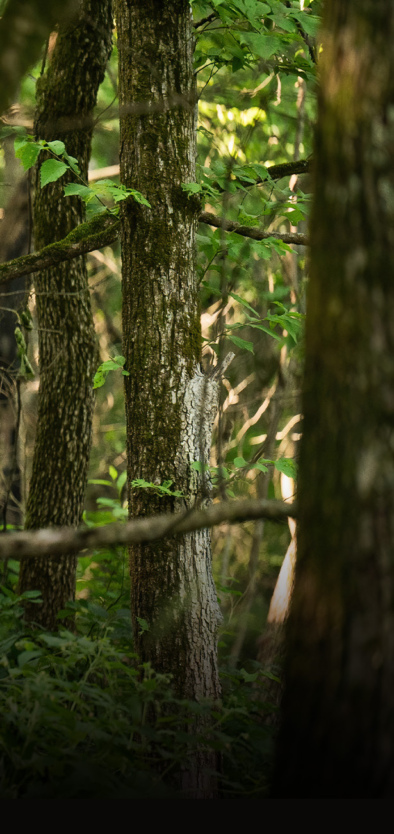





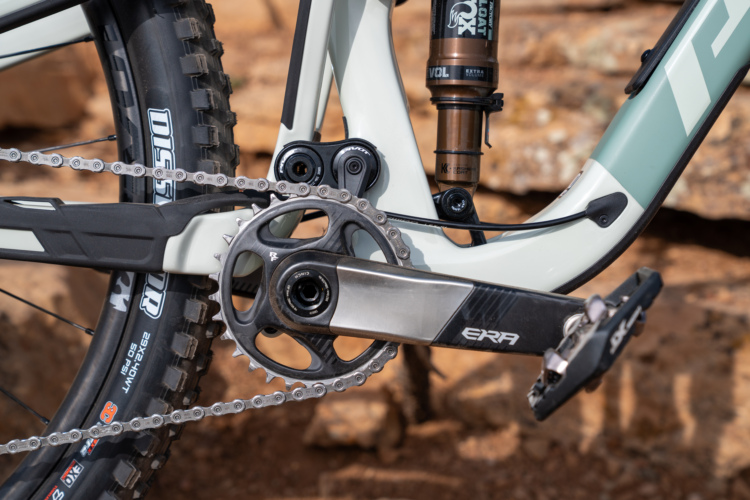
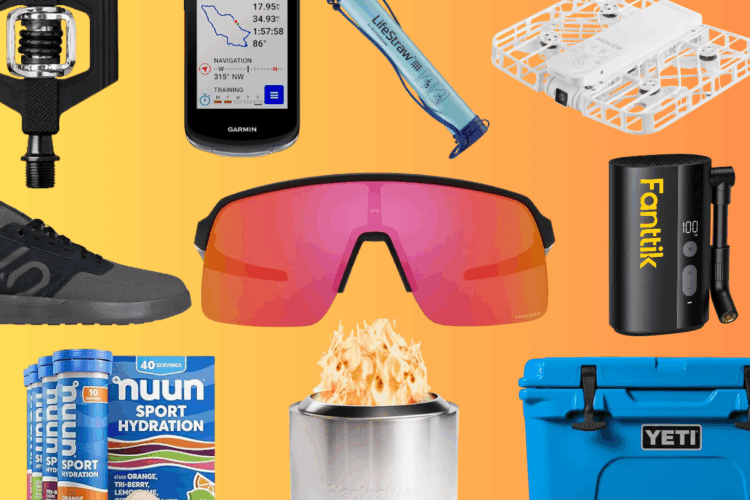
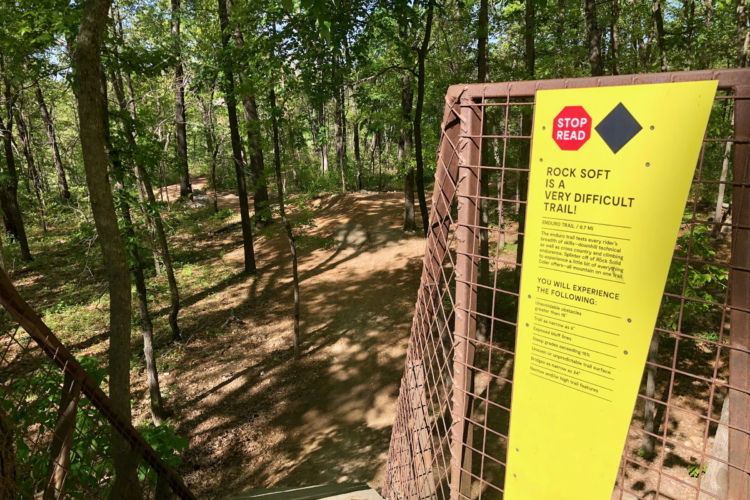
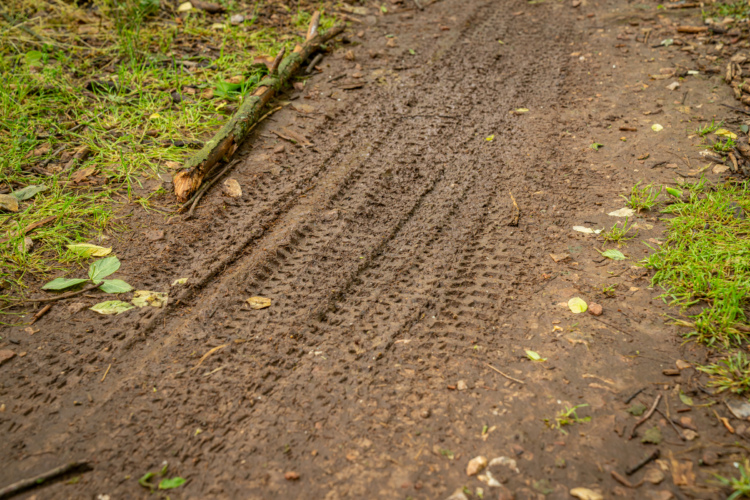

1 Comments
Sep 19, 2023